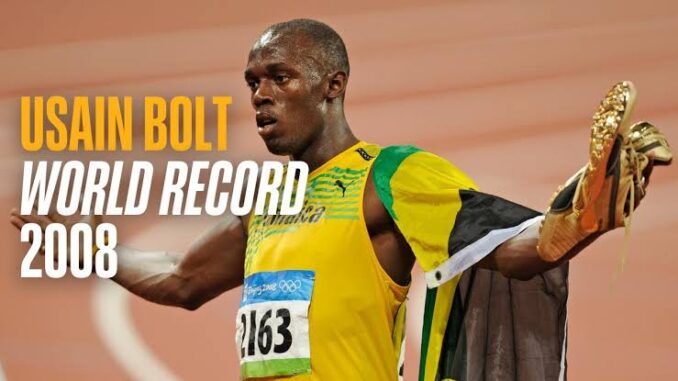
When fans think of sprinting greatness, one race often comes to mind—the 2008 Beijing Olympics men’s 100m final. On that night, under the glowing lights of the Bird’s Nest stadium, Usain Bolt announced himself as the face of a new era in athletics. What unfolded was not just a victory but the birth of a legend, remembered as one of the most iconic performances in Olympic history.
The Jamaican sprinter entered Beijing as a rising star but not yet the undisputed king of sprinting. He had only begun focusing seriously on the 100m earlier that year. Before then, Bolt was more recognized as a 200m specialist, with his tall frame and long stride seemingly better suited for the half-lap sprint. However, his rapid progress in the 100m during the 2008 season—culminating in a world record of 9.72 seconds in New York just months before the Games—set the stage for something extraordinary.
On August 16, 2008, the world watched closely as the finalists lined up. Bolt, only 21 years old, appeared calm and relaxed, even playful, as he struck poses and gestured to the crowd. In contrast, his competitors, including American sprinter Walter Dix and Trinidadian star Richard Thompson, carried the usual expressions of focus and intensity. Bolt’s demeanor gave the impression of a man completely unfazed by the moment, yet what followed showed that he was not only confident—he was ready to rewrite history.
When the gun fired, Bolt exploded out of the blocks with a strong but not perfect start. For a fraction of a second, the race looked level. Then came the phase that has since defined his career—the transition to top speed. His enormous 6’5” frame covered ground with seemingly effortless strides, and within 30 meters he had surged ahead of the pack.
By the halfway mark, Bolt was clearly in front, and the crowd inside the Bird’s Nest began to sense that they were witnessing something special. What made the performance truly unforgettable, however, was the final 20 meters.
Instead of powering through the finish line in textbook form, Bolt spread his arms wide, thumped his chest, and celebrated before crossing the line. Even with this premature celebration, he stopped the clock at 9.69 seconds—smashing his own world record and setting a new Olympic standard.
The sight of Bolt coasting to the finish, his shoelaces famously untied, became an enduring image of Beijing 2008. It was the first time the world fully grasped the combination of speed, charisma, and showmanship that would make him the most recognizable figure in track and field. His margin of victory was extraordinary; he finished well ahead of Richard Thompson, who claimed silver, and Walter Dix, who secured bronze.
Bolt’s first Olympic gold was more than a race—it was a spectacle. He had not only dominated the event but done so in a way that challenged conventions about sprinting. Traditionalists argued that his early celebration cost him an even faster time, perhaps closer to 9.6 flat. But to the millions watching, that was beside the point. What mattered was the style, the swagger, and the joy he brought to the sport.
Looking back, the men’s 100m final in Beijing was the moment Usain Bolt transcended athletics. It marked the beginning of an era where sprinting was no longer just about raw speed but also about personality and entertainment. That night in 2008, the world didn’t just see a race—they witnessed the rise of a global superstar.
Be the first to comment